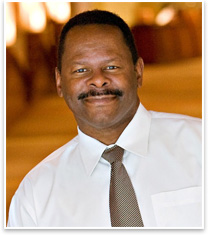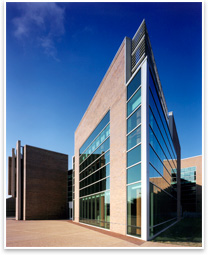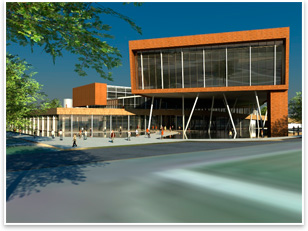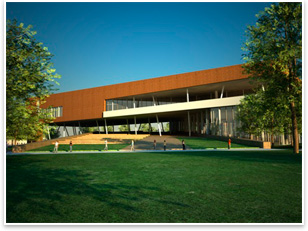| Will Signature Design Survive the Recession?
Curtis J. Moody, FAIA, NCARB, LEED-AP

Curtis J. Moody, FAIA.
Although signs are beginning to point to the recession’s end,
there remains no doubt the architecture industry has taken a hit.
Firms have been forced to reduce hours, downsize staff, and even
close their doors due to the decrease in available work. With a new
perspective on funding, tighter budgets, and overall resources, how
will this impact the future of signature design?
As the president and CEO of Moody•Nolan, a firm established
in the early 1980s, I’ve certainly witnessed the industry go
through its ups and downs. However, one thing that has remained consistent
is the presence of signature design. Viewed as one’s style
of architecture, signature design is carried throughout every building
respective architects design. As the project’s plan is created,
it is the architect’s trademark and unique features are embedded
into all aspects of the design that create a clear identity for the
building.

Hampton University, by Moody•Nolan.
However, like the many changes the industry has encountered since
the recession, signature design will also change. In the past, a
client would want a signature design to make a statement within their
community or organization, and they were willing to pay the cost
that came with it. But in challenging economic times, more clients
will be forced to restructure their approach to signature design
because of tighter and more constrained budgets. Clients will still
look to the architect to receive the creative results they’ve
always been given, but at a lesser cost.

Ohio Northern, by Moody•Nolan.
Consequently, the doors will open for less-established high-design
firms aspiring to achieve the signature design status. Clients will
not have to sacrifice the design premise and will look to these firms
to provide a high level of design, expecting to see reduced fees
and overall construction cost that sometimes are encountered with
signature architects. In fact, our firm is currently experiencing
the benefit of this scenario, where the client initially retained
a highly regarded signature design architect. Because firm selection
committees realized that they could not achieve the original fundraising
goals, they determined that a more economically sensitive approach
was necessary, and parted ways with the design firm. Our firm and
several other design firms are being considered to work with clients
to give them high designs within more conservative budget parameters.

Ohio Northern, by Moody•Nolan.
Is
this the end for signature design firms? No; there will always be
signature design and “starchitects.” However, as we put
the recession behind us, these firms will need to revisit their formulas.
Signature design firms, like most companies, will need to review their
business strategies in order to be competitive in the market because
of tighter financial resources and the increase in high design firms
pursuing work. Signature firms will also need to develop a rationale
as to how the client will benefit from their work, since there will
be an increase in competition from high design firms that can also
illustrate innovation, timelessness, and artistry.
|





